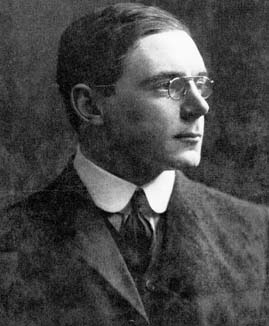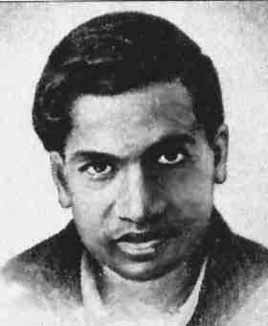1910
The Hardy Boys


 Skewes
Skewes
Interesting aside: Heady days at
Cambridge (The Cambridge Apostles: Forster, Huxley, Keynes)
Ramanujan, self taught prodigy, no university education. His
calculation of the
Zeta function for s=-1 was sent to
- That is,
 with p = -1,
i.e. 1+2+3+4+5+6+7+8+9....= -1/12 (amazingly enough)
with p = -1,
i.e. 1+2+3+4+5+6+7+8+9....= -1/12 (amazingly enough)
- Letter returned, "Mr. Ramanujan,
has fallen into the pitfalls of a very
difficult subject, Divergent Series". Later the letter landed on
Hardy's
desk who recognized that Ramanujan had reconstructed Riemann's Zeta
function.
Hardy
and Littlewood thought they had discovered another Riemann. Upon
probing for
proofs of Ramanujan’s claims, Ramanujan was downgraded to a Jacobi.
- First calculations of the Zeta zeros were done using formula discovered by Ramanujan.
Hardy and Littlewood were able to prove that at least 0% of the zeros
in the
critical strip were on the critical line. Apparently a major
accomplishment.
- 1974 Selberg proved that a non zero fraction of the zeros in the critical strip were on the critical line.
- 1974 Levinson proved at least 1/3 of the zeros in the critical strip were on the critical line.
Littlewood proved in 1914 that the Gauss's estimate and pi(N) traded
the lead
an infinite number of times.
- Skewe's showed that the first time this occurs is no more than 10^10^10^34, estimate of the age of the Universe 10^17 seconds, protons in the Universe 10^80 estimated by Hardy.
- "Skewe's number is the largest
number that has ever served any definite
purpose in mathematics" Hardy.
“Graham’s
number is actually a larger number that is considered the largest
seriously
used, doesn’t admit to scientific notation.”
back
continue
Aside 1: Hardy stayed
in Denmark with Bohr until the very end of the summer
vacation, and when he was obliged to return to England to start his
lectures there was only a very small boat available…. The North Sea can
be pretty rough, and the probability that such a small boat would sink
was not exactly zero. Still, Hardy took the boat, but sent a postcard
to Bohr: “I proved the Riemann Hypothesis. G.H. Hardy.” If the boat
sinks and Hardy drowns, everybody must believe that he has proved the
Riemann Hypothesis. Yet God would not let Hardy have such a great honor
and so He will not let the boat sink.
Aside 2: Just before
Ramanujan died, Hardy visited him in the Hospital and commented that
the taxi he took was number 1729, and indicated that is was a rather
dull number.
'No, Hardy,' said Ramanujan, `it is a very interesting number. It is
the smallest number expressible as the sum of two positive cubes in two
different ways'